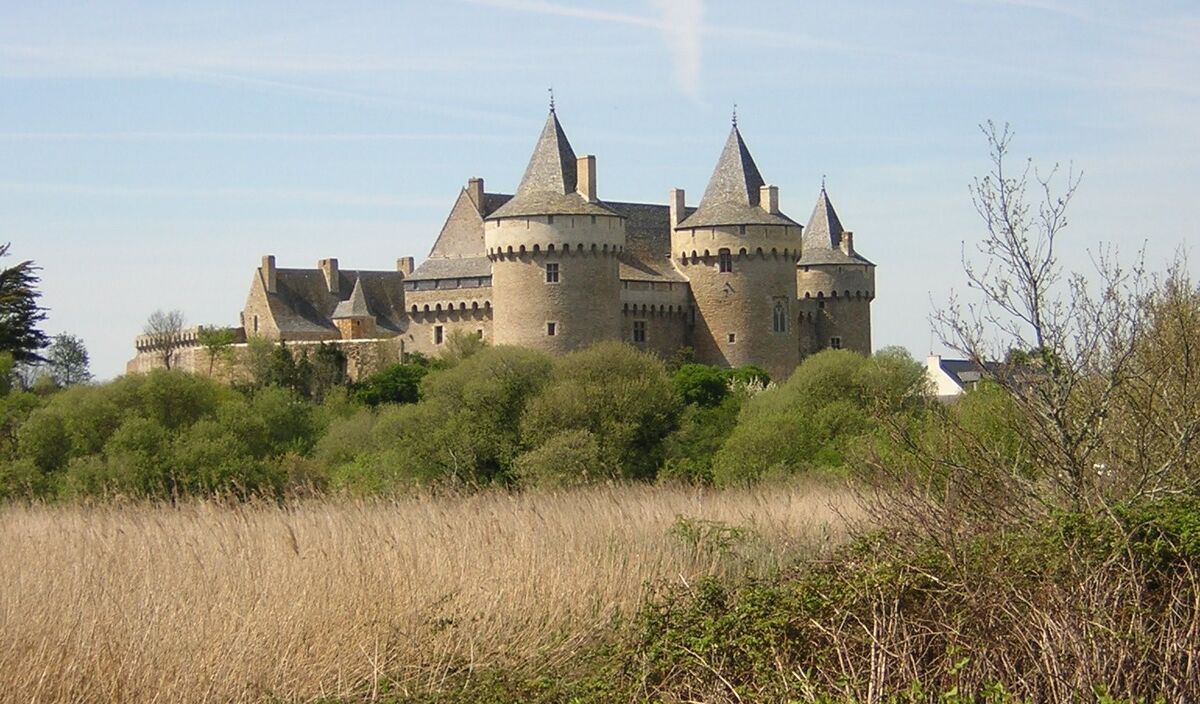With stability and security disappearing since the end of the Roman Empire, a new way of organising Western society was put in place to ensure the protection of the population. This system was called feudalism and centred on two elements:
- The fortified castle
- The seigneury, the lord or seigneurs and the peasants

The fortified castle is certainly one of the strongest symbols of the Middle Ages. This medieval construction was at the heart of relations between different groups such as the king, the lords, the peasants, etc. Many fortified castles were built in Europe. Here are three French fortified castles dating from the Middle Ages:

Château de Bonaguil
(France)

Château de Suscinio
(France)

Castle of the Counts of Flanders (Belgium)
In the Middle Ages, the fortified castle had two main functions. Firstly, it was the seigneury's residence, where the lord or seigneurs and their families lived. Secondly, it was a place of protection for the inhabitants of the seigneury. In the event of an attack by bandits or an opposing army, the population of the village and surrounding area would take refuge within the fortified castle walls. This relationship of dependence between the peasants and the lord or seigneurs had a profound effect on medieval feudalism.

Peasants working on the lord or seigneurs' estate
In the Middle Ages, the conflicts between the kingdoms caused a great deal of instability in Europe. However, it was largely thanks to the bond of dependence between the lord or seigneur and his peasants that the kingdoms remained stable. In exchange for agricultural land, known at the time as a fiefdoms or tenures, peasants swore loyalty to the lord or seigneurs. Together, the farmland, mill, fortified castle, etc. formed what was known as a seigneury.

Example of a seigneury in the Middle Ages and its various components
By swearing loyalty to their lord or seigneurs, serfs (synonymous with peasants in the Middle Ages) enjoyed rights (protection in the event of attack, access to pasture and forest, etc.) and duties (forced labour, mill taxes, dues, etc.).
In the Middle Ages, a lord was a man who granted possession of his lands to other men (vassals) who remained under his control.
A suzerain lord was a superior lord who granted a fiefdoms to a vassal.
A vassal is a person who depends on the suzerain from whom he receives a fiefdoms. The vassal may be a small lord or a peasant.
A fiefdom is a piece of land, a right or an income that a vassal holds from his lord in return for certain services owed to him.
Three main groups underpinned medieval society. Each contributed an essential element to the smooth running of the feudal system. These are known as the three social orders. They are the nobility (great lords and lesser lords) who provide protection for all, the clergy (bishops and priests) who pray for the salvation of the souls of all and the Third Estate (peasants and artisans) who work to provide for the needs of all.

The social hierarchy in the Middle Ages